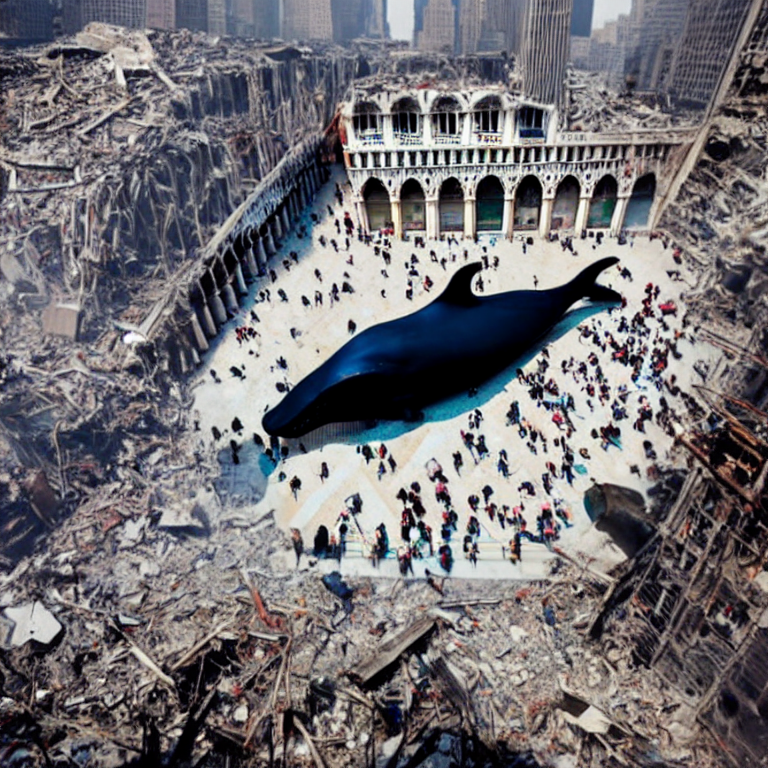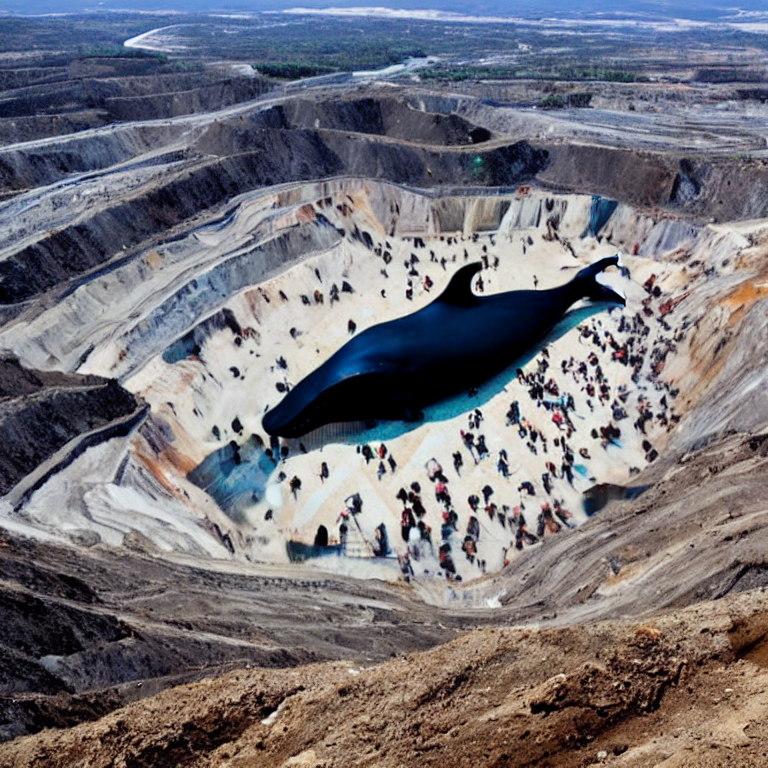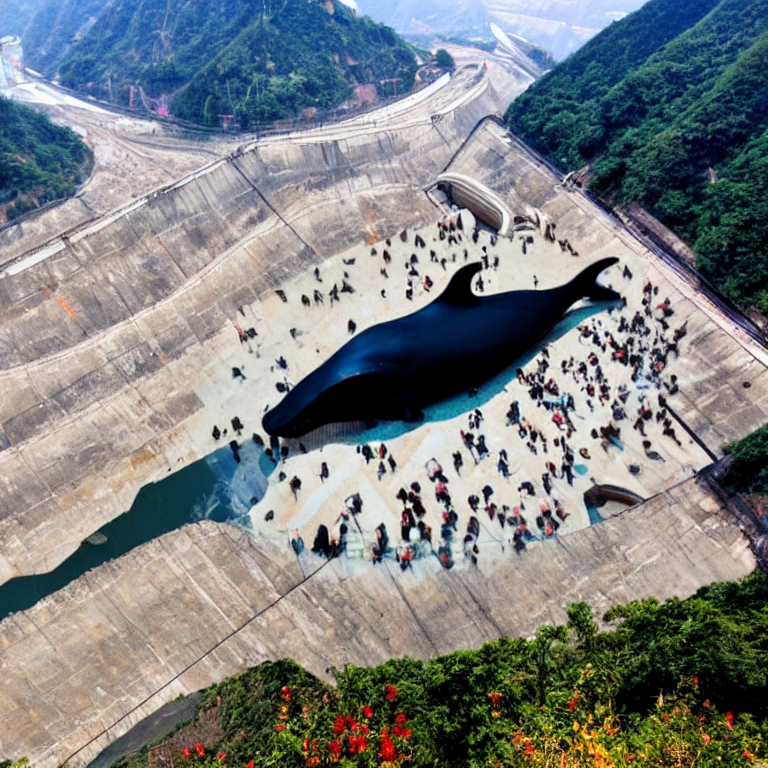Centering Disaster is a series of experiments with a technique called “outpainting,” where an AI extends an image by merging its visual features with a new prompt. In the center lies an ominous black whale, surrounded by a collapsing civilization or ecosystem. Here, context is everything.
The image of a black whale in the Piazza San Marco came from a prompt by Ai Lao and Jon Phillips: “Venice, What’s Underwater?” The whale could be interpreted as a decadent art object, or something more sinister. I came around to thinking about the prompt literally: Venice is underwater! Or it soon will be.
Venice is sinking while the seas are rising. The Biennale comes every two years, a major flood every 50. The city’s wooden piles that pierce the lagoon are met by the meltwaters of ice sheets and glaciers. By 2100, Venice could well be underwater.
AI art has a similar dilemma of “ecological ethics” as the land art movement (think Robert Smithson or Michael Heizer), which necessarily altered the environment, often using heavy machinery. In the same way, AI depends upon the lithium mining and data mining, and must situate itself within environmental and social disruptions.
(As an aside, one of the earliest instances of land art took place at the 1968 Venice Biennale, when Nicolás García Uriburu dyed the Grand Canal green.)










- Venice as we imagine it
- Venice after being destroyed by an atomic bomb
- The ruins of the Colosseum in Rome
- Ground Zero in New York City
- A strip mine
- A refugee camp
- A massive dam construction project
- A scrap yard
- A contemporary art exhibition hall
- A beach resort (Venice again in 10,000 years?)
Filed under: Machine Learning Text-to-Image
Christopher Adams is an art producer and computer programmer based in Taipei.

